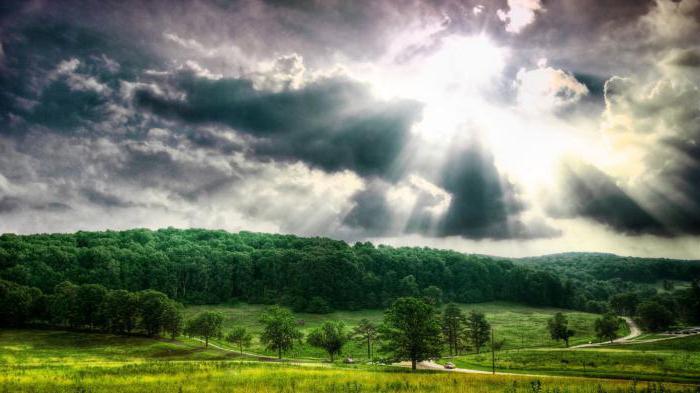We often notice the beauty of nature, but rarely think about how it is arranged, and what significance is under our feet. It turns out that the sparkling snow that we play in the winter, and the soil on which grass grows, and dense forests, and sand on the shores of the raging sea (and the sea itself) are called one term - "the underlying surface."
What is our planet covered with
An active or underlying surface is the uppermost layer of the earth's crust, including all types of water bodies, glaciers and soil that are involved in various natural processes.
How can what is under our feet affect the climate? First of all, through the absorption or reflection of sunlight. In addition, the influence of the underlying surface on the climate is carried out through water and gas exchange, as well as biochemical processes. For example, water is slower than soil, heats and cools, which is why coastal areas have a milder climate than those that are far from the seas and oceans.
Light reflection
The temperature on our planet depends on the sun. But, as you know, different surfaces absorb and reflect the sun's rays in different ways , this is the basis for the influence of the underlying surface on the climate. The fact is that air itself has a very low thermal conductivity, because of this it is colder in the atmosphere than at the surface: below, the air warms up precisely from the heat absorbed by water or soil.
Snow reflects up to 80% of the radiation, therefore in September, when there is no such precipitation, it is warmer than in March, although the amount of solar radiation in these months is the same. We also owe the well-known Indian summers to the underlying surface: soil heated during the summer in the autumn gradually gives off solar energy, adding heat to it from decaying green mass.
Island climate
Everyone likes a mild climate without sharp winter and summer temperature extremes. This is provided to us by the seas and oceans. The water mass heats up slowly, but at the same time it is able to store up to 4 times more heat than the soil. Thus, the water underlying surface during the summer accumulates a large amount of energy, and in winter gives it away, heating the coastal areas.
The famous sea breeze is also the merit of the water surface. In the afternoon, the shore warms up more strongly, hot air expands and “sucks” colder from the side of the reservoir, forming a light breeze from the water. At night, on the contrary, the earth cools quickly, cold air masses move towards the sea, so the breeze changes its direction twice a day.
Relief
Of great importance on the climate is the terrain. If the underlying surface is flat, it does not interfere with the movement of air. But in places where there are elevations or, conversely, lowlands, special conditions are created. For example, if a reservoir is located in a depression below the main relief, then the evaporation and heat from the water do not dissipate, but accumulate in this area, creating a special microclimate.
Many have heard of Sannikov’s land in the Arctic Ocean. There is a theory that there could really exist an island with a tropical climate: if the land area is completely surrounded by high glaciers, then the air circulation will decrease, the heat will not “erode”, and the glacier, reflecting the sun's rays, will begin to accumulate them on this island.
Even today, we can observe vegetation on some northern islands that is uncharacteristic of those latitudes. This is explained precisely by the features of the underlying surface: rocks and forests protect from winds, and the surrounding sea smooths out temperature changes.
the greenhouse effect
We often hear that due to industry, the number of greenhouse gases is growing , and the forest produces a lot of oxygen. In fact, this is not entirely true: it is necessary to take into account the factors of the underlying surface. Dead plants and fallen foliage become food for a huge number of microorganisms, insects and worms. All these vital processes occur with the release of a large amount of greenhouse gases and the absorption of oxygen. So, part of the carbon dioxide, which the plants received from the air, again returns to the atmosphere.

In general, the balance of substances remains approximately constant due to an increase in green mass, that is, it is incorrect to think that the forest is such a factory for the production of oxygen for the city. It is even more difficult to breathe in tropical forests than in megacities, due to the high humidity of the underlying surface and active life in it. Of course, industry has an impact on climate, but not only directly, but also through the destruction of the ecosystem. Deforestation and pollution of soil and water leads to the fact that the new green mass is growing less and decaying more and more, and toxic substances that were previously bound by plants enter the atmosphere. Thus, the underlying surface turns the forest from the "lungs of the planet" into the source of those same greenhouse gases.